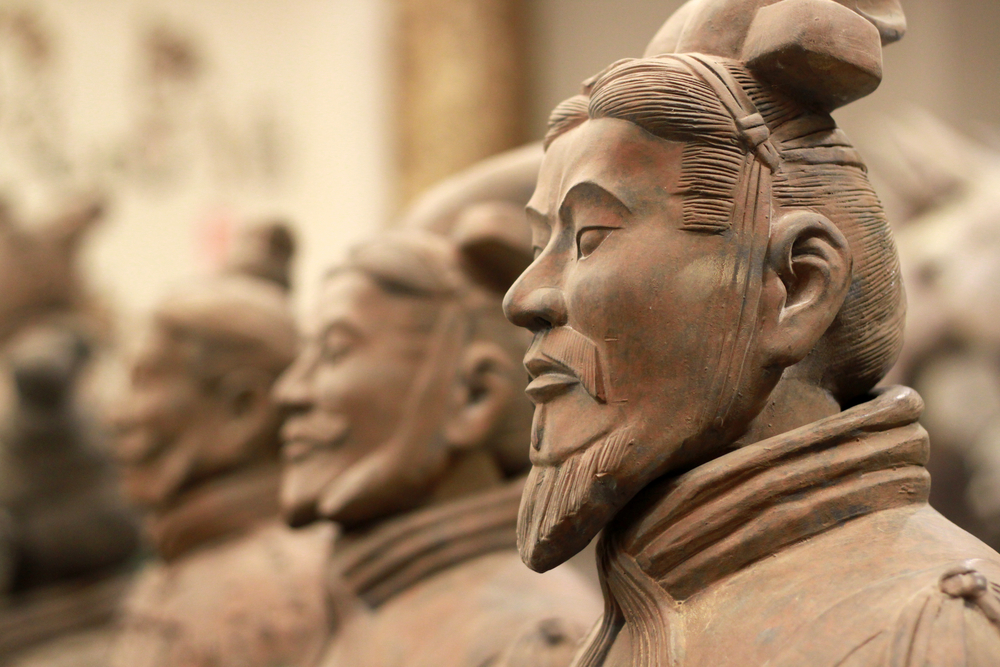The vast history of ancient China, which spans many millennia, has left indelible marks on world civilization. This journey through time explores the great empires and significant philosophical movements that have charted the nation’s extraordinary legacy. Join us as we delve into ancient China’s intriguing past, examining the reigns and ideologies that have sculpted this notable culture.

The Xia Dynasty (c. 2100-1600 BCE):
Famed as the inaugural dynasty of Chinese antiquity, the Xia Dynasty constitutes the bedrock on which Chinese civilization was established. Mythological monarchs like Yu the Great are emblematic of this era, which showcased strides in agriculture, the crafting of bronze, and advancements in water management.
The Shang Dynasty (c. 1600-1046 BCE):
During the Shang Dynasty, a centralized sovereign state began to take shape, and the origins of Chinese script appeared on oracle bones. It was a period characterized by the blossoming of initial Chinese lettering and advancements in the art of bronze smelting. It also brought forth a stratified society and spiritual customs focused on venerating ancestors.
The Zhou Dynasty (c. 1046-256 BCE):
This era in ancient Chinese history was pivotal. The concept of the “Mandate of Heaven” was put forth, advocating that rulers were empowered to govern by celestial sanction but risked losing this privilege through mismanagement. This epoch also bore witness to the rise of major philosophic teachings, most notably Confucianism and Daoism.
The Qin Dynasty (221-206 BCE):
In the era of the Qin Dynasty, China was unified under a central authority. This period is largely remembered for the governance of Emperor Qin Shi Huang, who brought consistency to the script, coinage, weights and measures, and oversaw the construction of the formidable Great Wall. He is also known for his elaborate mausoleum guarded by the terracotta warrior statues, an extraordinary find for archaeologists.
The Han Dynasty (206 BCE-220 CE):
Referred to as ancient China’s Golden Age, the Han Dynasty marked significant growth in literature, the arts, science, and technology. This was the era when the Silk Road flourished, bridging the East and the West for trade. Confucian thought became the guiding philosophy, and the inception of the civil service exams began, a system to recruit government officials based on their skills and knowledge.
The Tang Dynasty (618-907 CE):
The era of the Tang Dynasty is heralded as a golden period of cultural magnificence and artistic expression. It was marked by affluence, flourishing trade, and a cosmopolitan atmosphere. The capital, Chang’an, emerged as a thriving hub of international trade and culture. Poetry and painting prospered with celebrated figures like Li Bai and Du Fu contributing timeless works.
The Song Dynasty (960-1279 CE):
Notable for its groundbreaking technologies and economic prosperity, the Song Dynasty was pivotal in the history of printing with the invention of movable type. Agricultural and water control technologies were enhanced, boosting production. This era also saw the development of Neo-Confucianism, a philosophy that merged Confucian ethics with elements from Buddhism and Daoism.
The Ming Dynasty (1368-1644 CE):
In the Ming Dynasty, China experienced a surge in stability and wealth. The fortification of the Great Wall was intensified, and Beijing saw the construction of the Forbidden City as the imperial residence. The dynasty was also known for Zheng He’s extensive sea voyages, which extended as far as Africa.
In summary, the storied history of ancient China presents an absorbing voyage through epochs that reveal the ruling dynasties, prevailing thoughts, and monumental achievements that have fashioned this impressive civilization. From the Xia through to the Ming Dynasty, China’s ancient narrative encompasses significant developments in politics, technology, the arts, and philosophy that persistently resonate across the globe. Unpacking the annals of ancient China allows us to better appreciate the heritage of this venerable culture and its lasting significance in the annals of human progress.







